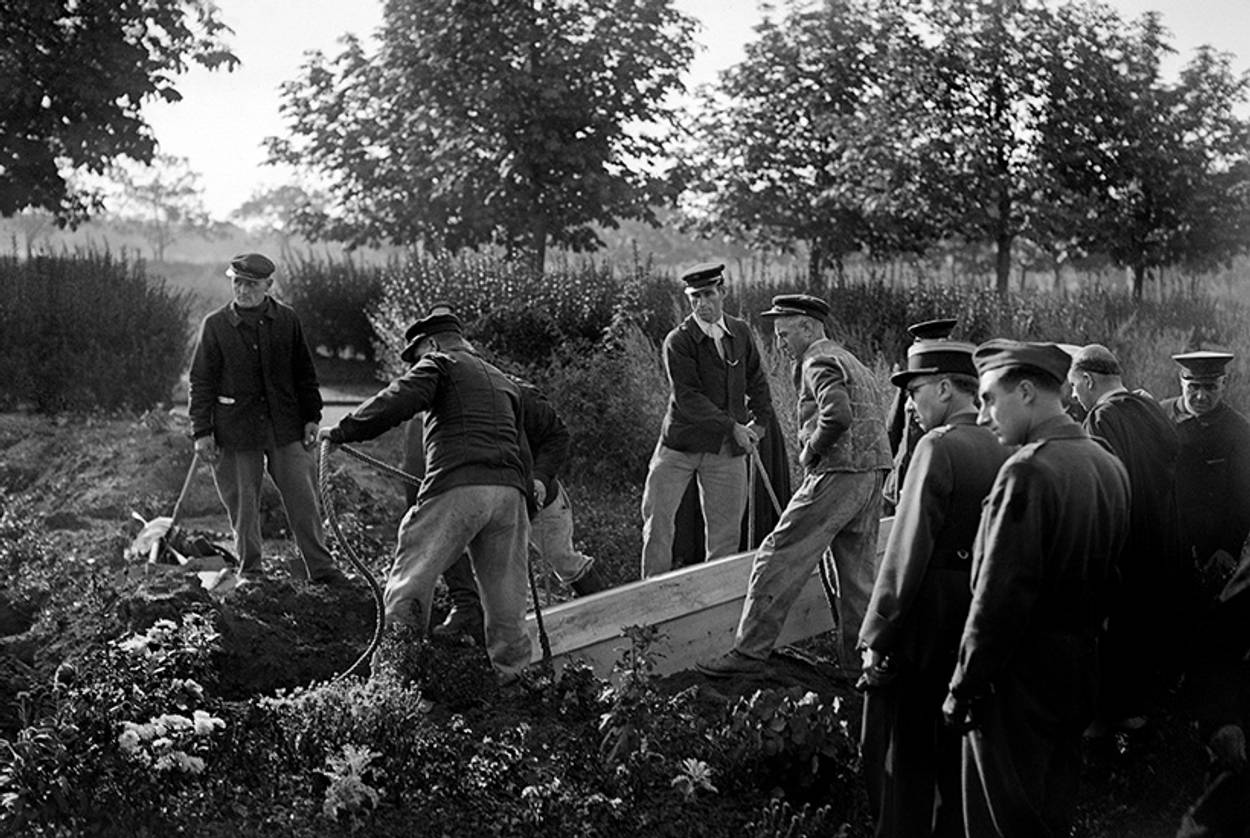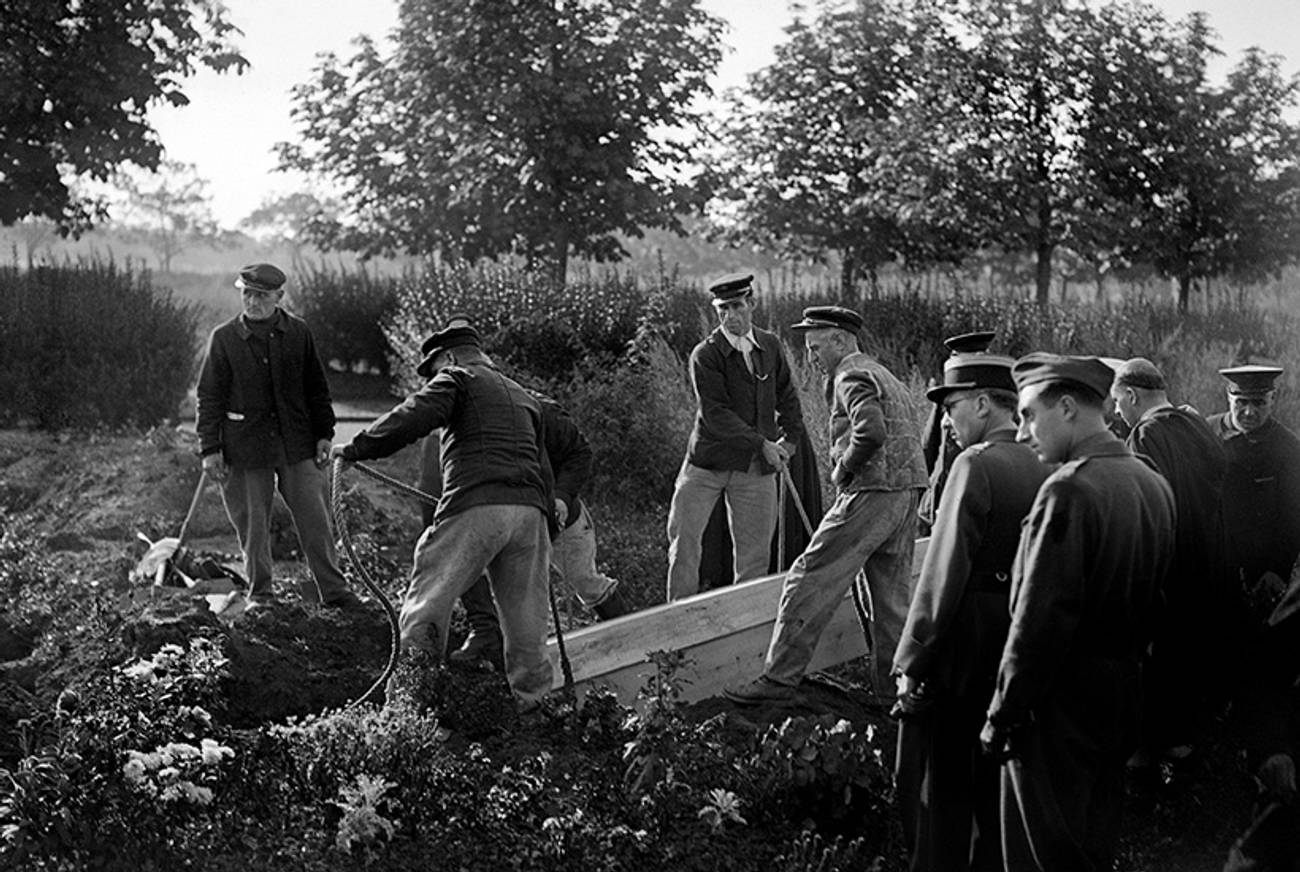Did the French Become Holocaust Deniers by Talking Too Much?
A new book in France aims to set the record straight about national awareness of the horrors of the Shoah




On Oct. 11, 2013, Erich Priebke, an unrepentant Nazi and convicted war criminal, died comfortably in his house in Rome—the same city that, in 2008, elected Gianni Alemanno mayor. Alemanno had previously belonged to a neo-fascist party formed by surviving members of Mussolini’s inner circle. Not far from the mayor’s office, Il Duce’s granddaughter Alessandra—who once resigned from a political party when a ranking member called fascism “evil” and apologized for his country’s role in the Shoah—now serves as a senator. Italy, one can safely say, is not entirely ashamed of its fascist past.
None of this should be surprising. Following the war, the Togliatti amnesty pardoned Italian fascists en masse and allowed them to resume their places in ministries, town halls, schools, and businesses; fascists were and are to be found in important government posts, in classrooms, and in boardrooms up and down Italy.
Stories both similar and worse could be told about almost every country in Europe—and not just Europe. Given the unexamined and unpunished involvement of General Motors in the German war effort through subsidiary Opel, the warm welcome extended to Reinhard Gehlen and Werner von Braun through Operation Paperclip, and the election to the presidency of two men whose forebear directed a bank seized by Congress for “trading with the enemy,” there are stories to be told about the United States, as well. Yet somehow, despite all this, it is an unquestioned Anglo-American truism that France—which was never part of the Axis, lost more lives to the war than either America or the United Kingdom, and had a Jewish prime minister at the outbreak of the war—is somehow the very heart and epitome of Holocaust amnesia.
François Azouvi’s award-winning French study Le Mythe du grand silence is not specifically intended as a counterweight to the myth that the French were and are any better or worse than other Europeans at “forgetting” the Holocaust. The goal is simply to set a skewed record straight and demonstrate that, pace Klarsfeld, the commonly accepted idea that there was no recognition or commemoration of the Holocaust in the first decades after the war is untrue; that both Jews and gentiles took part in bearing testimony; and that this quickly became an aspect of shared culture. Because Azouvi, a philosopher and public intellectual, focuses on France, the appearance of this well-researched and intensely argued work in French nevertheless gives us an excellent chance to revisit other, far more dubious, assumptions.
Unsurprisingly, Jews were the first actively to memorialize the Holocaust; Azouvi recognizes the importance of this, but by examining cultural and artistic products (and critical and popular responses) he is able to track the elusive movement of memory through French society at large. While the author never denies that awareness of the camps expanded with time, his research allows him to demonstrate that French awareness of the horrors of the Holocaust was awakened far earlier than is generally admitted and spread further and faster than accepted wisdom allows.
***
One important aspect of Azouvi’s approach is to untangle the common conflation of “Vichy Syndrome” with Holocaust denial. “Vichy Syndrome” is the name that has been given to an unrealistically forgiving view of the German-backed and viciously anti-Semitic Vichy government. It took a series of high-profile trials that only really began in the 1980s—of Maurice Papon, René Bousquet, Paul Touvier, and others—to bring the falsity of this mass illusion to light. The ensuing debate was fierce, even violent: Bousquet was assassinated in his home while awaiting trial for crimes against humanity.
The irony is that it was precisely the visibility and earnestness of the ensuing public conversation that apparently led to the French being labeled Holocaust deniers. Meanwhile, countries that have rarely examined evidence of their own collaboration are presumed by their very silence to be innocent. This is not limited to countries such as the Netherlands (thousands of Dutch died defending Berlin) and Denmark (essentially a Nazi satellite, which provided massive industrial support for the German war effort), which could trace the origins of their collaboration to the confused and complex (im)morality of occupation. In the unoccupied United States, the Bush family and gentile-owned corporations such as Ford were allowed simply to forget their collaborations with Nazism as if they were a dream; meanwhile Julius and Ethel Rosenberg were put to death for collaborating with Stalin.
As Le Mythe points out, the subject of the Shoah quickly became one that was often depicted in French books and films; within 10 years or so of the war, three major French novels concerning the Shoah had won the Prix Goncourt, France’s most important literary award. These books were widely read, discussed in newspapers and on television, and fuelled public discourse. They were followed by important documentary films such as Night and Fog and The Sorrow and the Pity, which were exported worldwide.
Azouvi locates an important catalyst for widespread awareness in the scandal such art often caused. One important source he finds, for example, is the international debate that surrounded a German play by Rolf Hochhuth. Called The Deputy, it was about the blind eye Pope Pius XII turned to reports of genocide (recently re-imagined as the film Amen, by Costa-Gavras). In majority-Catholic France, the issue was explosive, because Catholics as abettors undermined the national identity as victims of occupation.
Taken as a whole, the body of art and criticism Azouvi examines suggests an interesting twist: that French culture has often represented the camps as the most extreme version of what the war was for everyone, Jewish or gentile, under occupation by a wantonly violent and seemingly unstoppable army. Some will view this as untrue to the horror of the experience, and their reaction is not unreasonable; but others will recognize and celebrate a vision of shared humanity in which all cruelty is unacceptable.
Azouvi doesn’t encourage any international comparisons, but it’s worth making at least one: South of the Alps, Primo Levi’s Se questo è un uomo could find no home with mainstream publishers when he first submitted it. Even when it was finally released by Francesco De Silva (essentially a private hobby press run by left-wing politician Franco Antonicelli), it sold poorly. For a long time Se questo è un uomo remained Italy’s only book about Auschwitz, and it languished unread. When Levi later sought to explain this by writing, “The times were not yet right, the public was not yet ready to understand and measure the phenomenon of the concentration camp,” we must assume he means the Italian public: In France such books were highly publicized events. If those events fuelled the debates that led some to speak on behalf of denialism, so much the better: It is surely preferable that denial be challenged in debate than accepted in silence.
Holocaust denial, unfortunately, is apparently a universal human trait: From David Irving in England to Fred A. Leuchter in the United States, there will always be individuals in every nation who wish, for whatever reason, to whitewash Hitler (in France they have Robert Faurisson, famously defended by Noam Chomsky); to claim such blindness as the historical patrimony of any particular nation would, as Azouvi effectively demonstrates, badly mislead us about the roots of our troubling contemporary reality.
***
Like this article? Sign up for our Daily Digest to get Tablet Magazine’s new content in your inbox each morning.
Tadzio Koelb‘s writing on art and literature has appeared in the New York Times, Times Literary Supplement, Art in America, the Guardian, the Jewish Quarterly, and the New Statesman.
Tadzio Koelb‘s writing on art and literature has appeared in the New York Times, Times Literary Supplement, Art in America, the Guardian, the Jewish Quarterly, and the New Statesman.